Brook trout are a captivating fish known for their vibrant colors and adaptability to diverse aquatic habitats. They’re an iconic species of char and the native “trout” in much of the eastern US and Canada.
This article explores the brook trout’s life cycle, habitat, diet, subspecies, and more.
What is a Brook Trout
Brook trout (Salvelinus fontinalis) are a species of char that inhabit eastern North America. They inhabit streams, rivers, lakes, and coastal marine waters, and they use several life history strategies. Stream residents remain in small streams for their entire lives. Fluvial brook trout live in rivers and may migrate to different parts of the river system. Adfluvial brook trout reside in lakes and migrate to streams to spawn. Some populations are anadromous, migrating to the ocean and returning to freshwater to reproduce.
Common names for brook trout include eastern brook trout, brooke trout, brook charr, brookies, speckled trout, and squaretails. Adfluvial Great Lakes brook trout are often called coasters. Salters is a common term for anadromous, sea-run brook trout.
Brook trout are the most trout-like of the char, with a higher tolerance for warm water than other char species. They also have a trout-like diverse and opportunistic diet. Like other members of the Salvelinus genus, brook trout are iteroparous, meaning they can spawn multiple times throughout their lives.
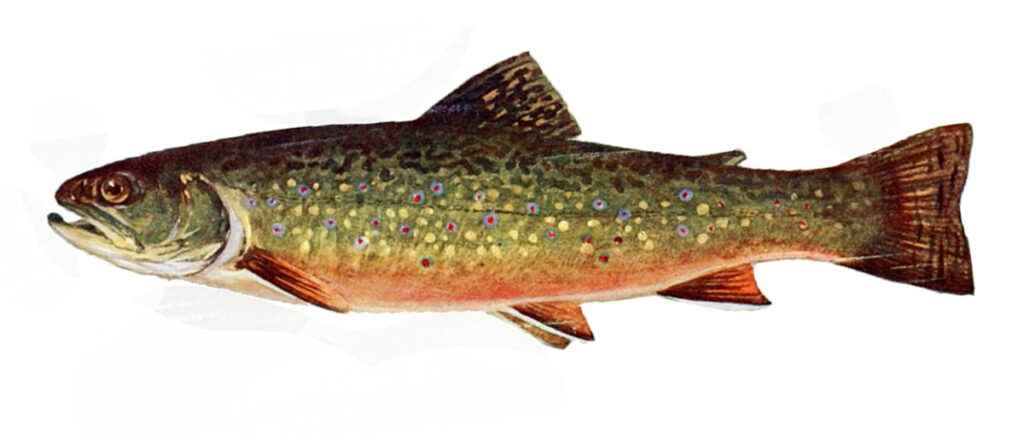
Taxonomy and Species
The brook trout’s scientific name is Salvelinus fontinalis. It was initially described as Salmo fontinalis by Samuel Latham Mitchill in 1814. It was later reclassified into the char genus Salvelinus, which includes other species such as lake trout (S. namaycush), bull trout (S. confluentus), Dolly Varden (S. malma), and Arctic char (S. alpinus).
“Fontinalis” is derived from Latin, meaning “of a spring or fountain.” It’s reflective of the brook trout’s preference for clear, cold streams and ponds in its native habitat.
Types of Brook Trout – Life Histories
Brook trout have a variety of life history strategies to survive in different aquatic environments.
Resident brook trout are the most common type, remaining in small streams throughout their lives. They don’t migrate. Instead, they live in the same waters where they hatched. Small stream resident brookies have short life spans and don’t grow very large.
Fluvial brook trout migrate within large river systems. They’re more common in the northern part of their range where water temperatures remain cold. Fluvial fish are capable of growing larger and living longer than resident fish.
Adfluvial brook trout live in large lakes and migrate to tributary streams to spawn. Coasters from Lake Superior and Lake Nipigon Great Lakes are well-known examples of adfluvial brook trout.
Anadromous brook trout are often referred to as salters. They migrate to the ocean to feed and return to freshwater to spawn. Most stay in estuaries and bays.
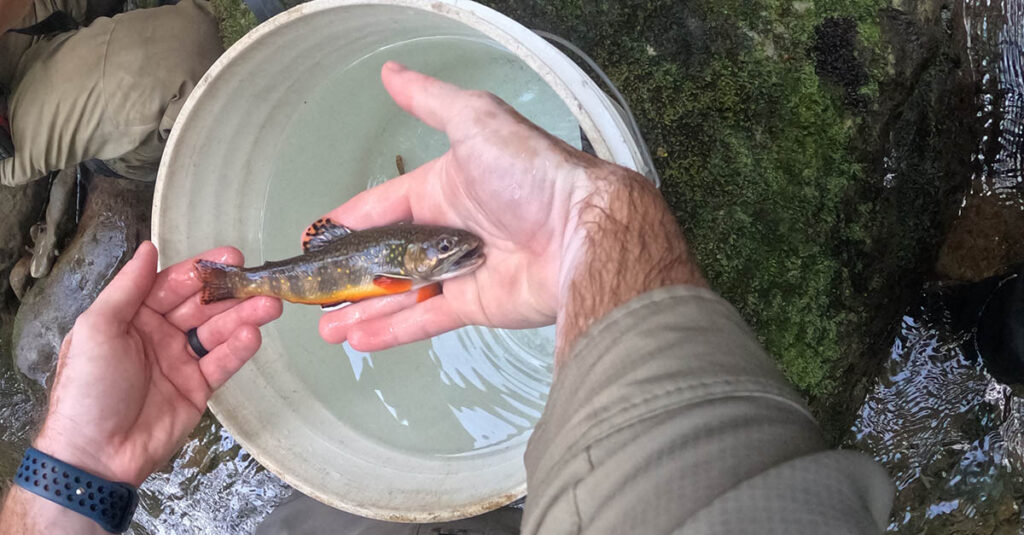
Subspecies
Silver trout (S. f. agassizi) were a unique subspecies of brook trout once thought to be Arctic char. They were only found in Dublin Pond, New Hampshire. Unfortunately, silver trout went extinct.
Aurora trout (S. f. timagamiensis) are native to only two waterbodies in Ontario: White Pine Lake and Whirligig Lake. They are silvery and lack vermiculations. This brook trout subspecies was nearly lost due to acid rain but was saved by hatchery propagation.
Southern Appalachian brook trout are genetically distinct from their northern cousins. They’re native to parts of Virginia, Tennessee, North Carolina, South Carolina, and Georgia. Though they are genetically unique, they resemble typical stream resident brook trout in appearance. Southern Appalachian brook trout are smaller than their northern relatives and rarely exceed 8 inches (20.3 cm).
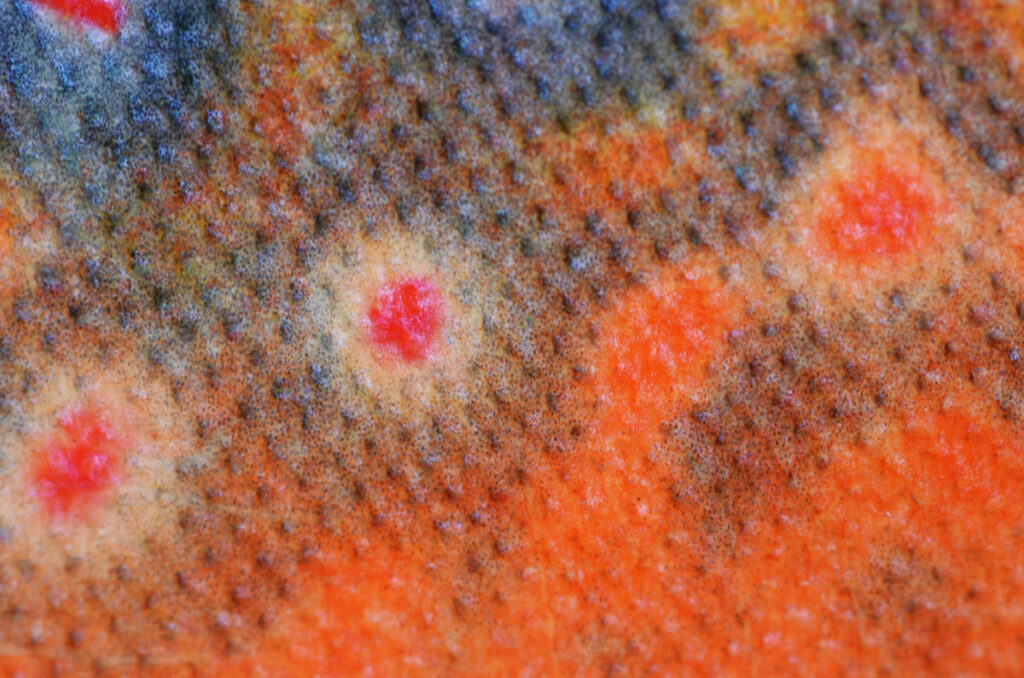
Physical Characteristics, Identification, and Size
Brook Trout Appearance
Brook trout are easily recognized by their striking colors and distinctive features. Their dorsal surface and fins have wavy, pale yellow markings known as vermiculations. They’re also covered in light yellow spots and red spots with light blue halos.
Brook trout display vibrant changes during spawning, especially in males. Males also often develop a kype or hooked jaw. The ventral region of mature fish, particularly males during spawning, can range from yellow-orange to crimson. The lower fins are red to orange with black and white borders.
Another noteworthy feature of brook trout is their large jaws. Similar to other species of char, they have a maxillary (upper jaw) that extends well past the eye.
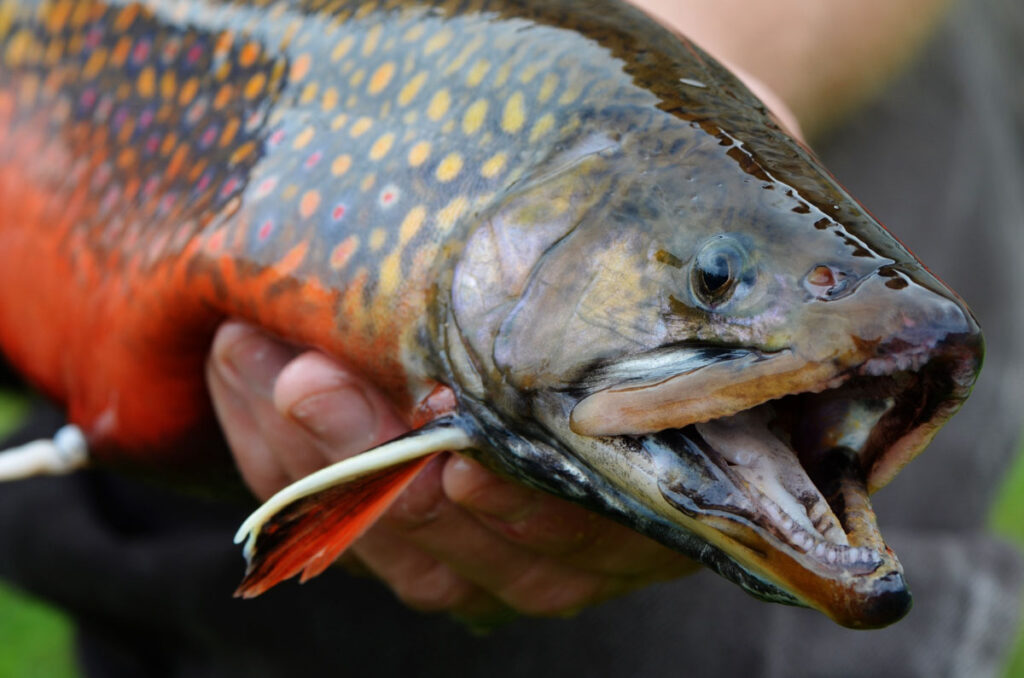
Sexual Dimorphism and Identifying Male and Female Brook Trout
While it’s very difficult to distinguish the sex of brook trout alevin and fry, differences become more apparent after a year or two.
Adult females tend to be lighter in color, especially along their bellies. They also have rounder jaws. Males are usually larger, more intensely colored, and have elongated jaws. These characteristics are most pronounced during the spawning season.
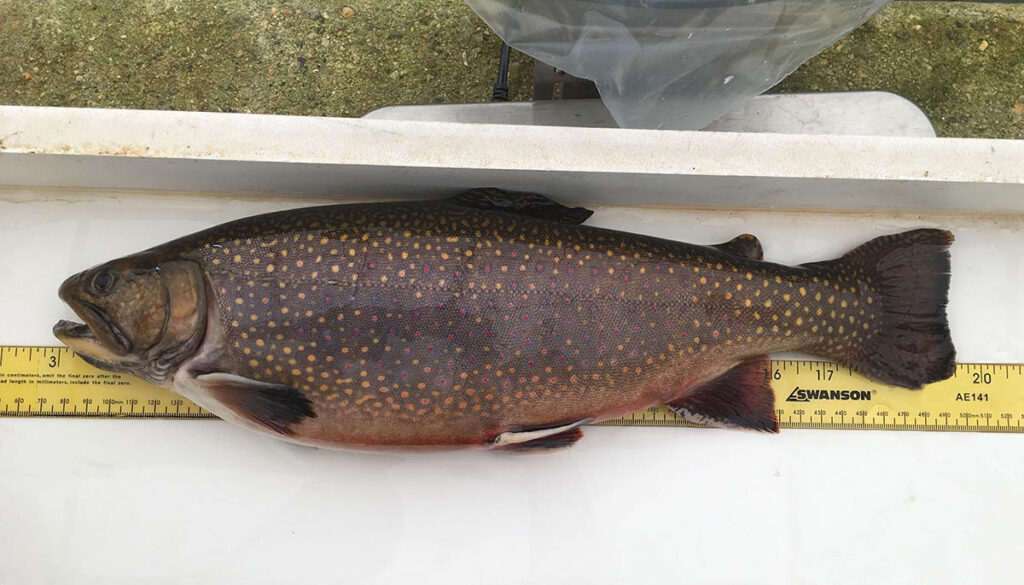
Brook Trout Size
Brook trout sizes vary depending on their habitat. In small, densely populated streams, brook trout often reach a maximum length of 5 to 7 inches (12.7 to 17.8 cm) and weigh 1.5 to 3 ounces (42.5 to 85 g). In larger rivers and lakes, the average brook trout measures around 12 inches (30 cm) and weighs 8 ounces (227 g). The typical maximum size for brookies is about 28 inches (71 cm) and 9 to 10 pounds (4.1 to 4.5 kg).
Coasters, adfluvial brook trout from the Great Lakes, commonly reach 6 to 7 pounds (2.7 to 3.2 kg). Salters, or sea-run brook trout, vary in size but tend to be smaller than coasters. The world record brook trout weighed 14 pounds, 8 ounces (6.6 kg), and was 31.5 inches (80 cm) long. It was caught in the Nipigon River in Ontario, Canada.
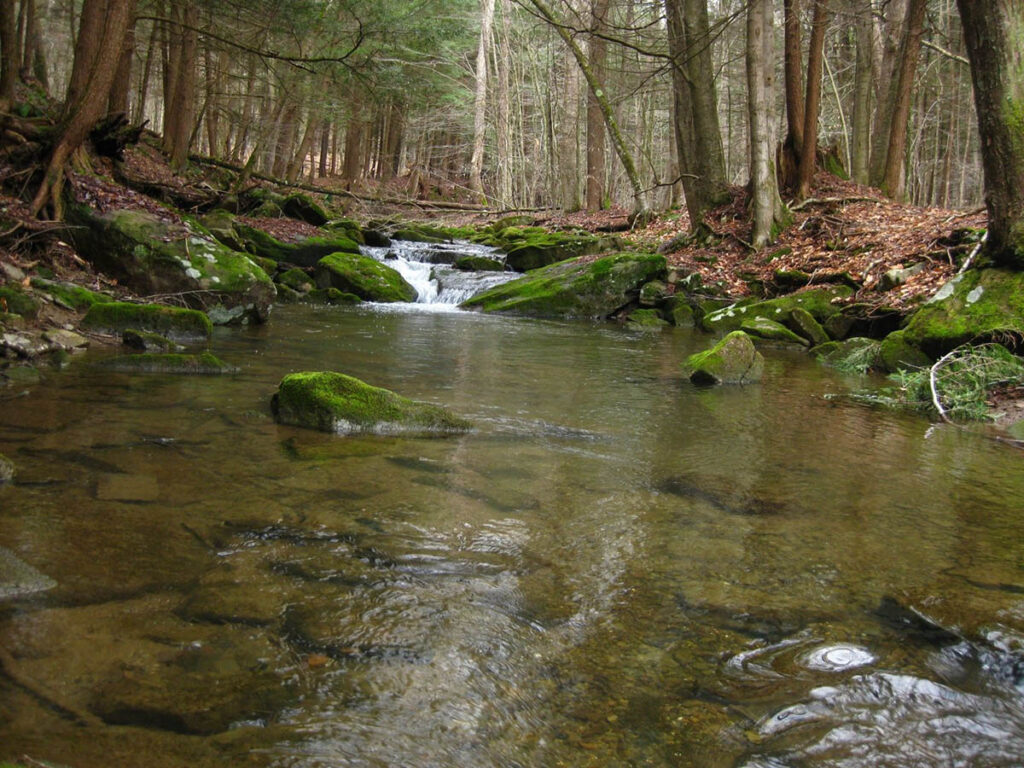
Brook Trout Range
Brook trout are exclusive to eastern and northern North America. Due to introductions from humans, their range has expanded significantly.
Native Brook Trout Range
Brook trout are native to the eastern United States and Canada. They inhabit the northeast US, extending south along the Appalachian Mountains to northern Georgia and South Carolina. Their distribution also extends west through much of the Great Lakes to the Mississippi River’s headwaters in Minnesota, Wisconsin, and Iowa. Notably, brook trout were historically absent from most of Michigan’s southern peninsula.
In Canada, brook trout are native from the Hudson Bay basin eastward and are present in the Great Lakes–Saint Lawrence system and the Canadian maritime provinces.
In the southern end of their range, brook trout are increasingly confined to higher elevations in the Appalachians.
Introductions
The range of brook trout has expanded beyond its native range through introductions that began as early as 1850. They were introduced throughout the western United States and Canada. Outside North America, brookies were widely planted across Europe, South America, and Oceania. Some introductions were unsuccessful, but many resulted in wild, self-sustaining populations.
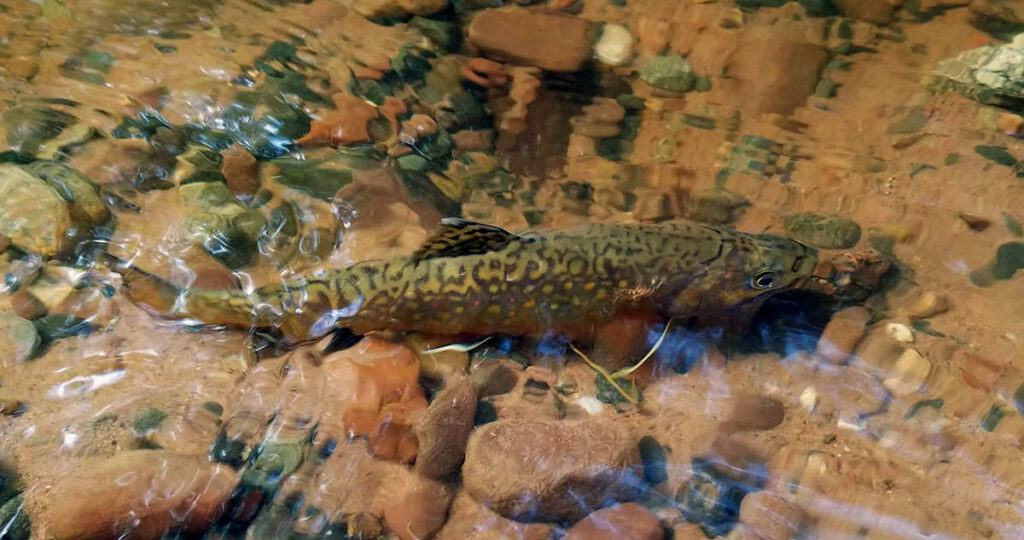
Brook Trout Life Cycle and Behavior
Brook trout have complex life cycles that vary depending on their genetics, available habitat, and the local ecology. This section highlights many of their core characteristics and behaviors.
Brook Trout Habitat
Brook trout inhabit diverse freshwater environments, including streams, rivers, lakes, and spring ponds. Some populations even utilize estuaries and coastal marine habitats in the Atlantic and Arctic Oceans.
Brook trout require cold, oxygen-rich water. They also prefer ample cover in the form of boulders, woody debris, overhanging vegetation, and undercut banks. They’re relatively adaptable to habitat changes and are more resilient than other Salvelinus species.
Reproductive Cycle and Spawning Behavior
Like all members of the char family, brook trout are fall spawners. September and October are the most common months. Spawning takes place in shallow gravel beds. Usually, this is in sections of streams with good water flow, but brook trout have also been known to spawn in lakes.
Female brook trout dig depressions in the streambed called redds. They often select sites where groundwater flows up through the gravel. Once the nest is ready, females release eggs, which are simultaneously fertilized by one or more males.
The fertilized brook trout eggs sink to the bottom and are covered by gravel. This protective covering helps guard against predators and from being dislodged. The eggs incubate through the winter, sourcing oxygen from the stream that flows over and through the gravel. Hatching occurs in a month or two. These newly hatched fish have yolks attached and are called alevin. They remain under the gravel until their yolks are mostly absorbed and emerge in late winter or early spring, depending on water temperature.
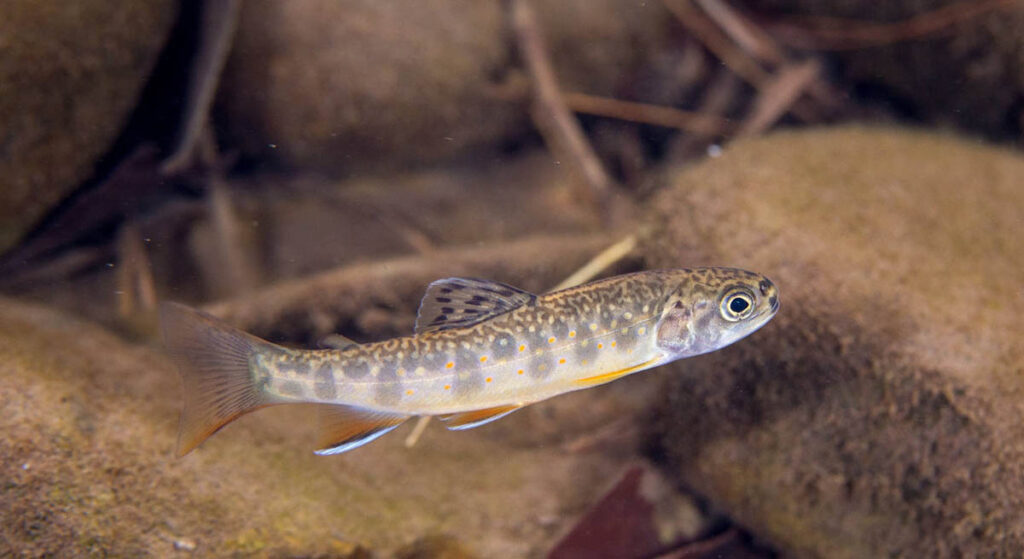
Juvenile Brook Trout: Fry and Parr
Brook trout emerge from their nests as tiny fry. They may have small amounts of their yolk sacs left but quickly must adapt to find food and shelter. These juvenile brook trout are sometimes called fingerlings. They feed on tiny organic matter, including small invertebrates and particles drifting in the water. They instinctively seek out shallow waters with plenty of cover, such as rocks, cobble, woody debris, and submerged vegetation, to hide from predators.
As brook trout grow, they develop into a stage known as parr, characterized by vertical markings along their sides called parr marks. These marks act as camouflage, helping them blend into their surroundings.
By late summer or early fall, brook trout often reach sizes of 2 to 3 inches (5.1 to 7.6 cm) long.
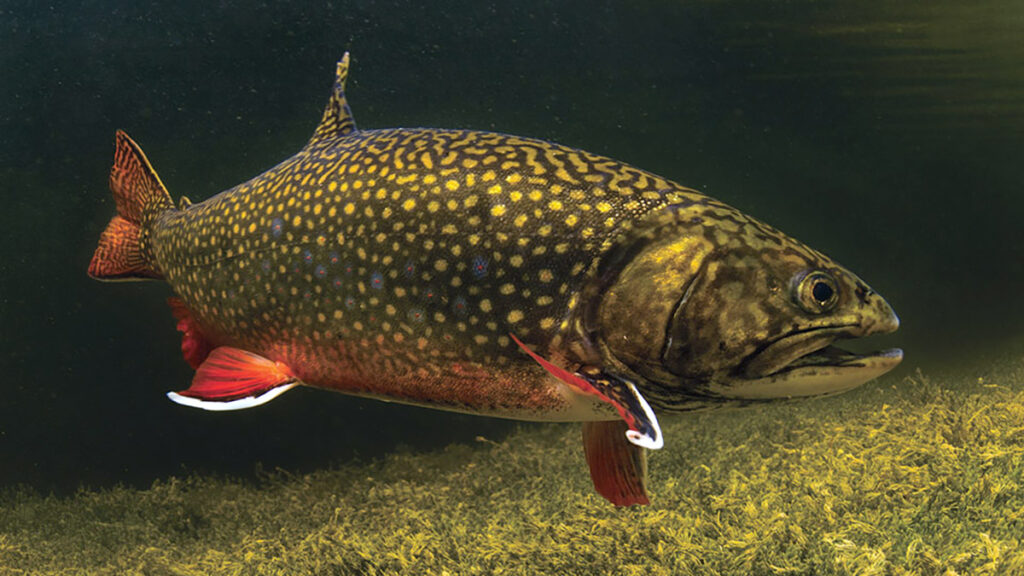
Mature Brook Trout
As young brook trout mature, they utilize deeper water habitats and feed on larger prey like aquatic insect larvae, terrestrial insects, and other invertebrates. They will also opportunistically prey on most organisms that fit in their mouths.
Like juvenile brook trout, adults prefer areas with lots of adjacent cover like large woody debris, boulders, cobble, and undercut banks.
How Long Do Brook Trout Live?
Brook trout display a varied lifespan dependent on their environment. Smaller stream fish typically mature rapidly, reaching sexual maturity at just two years old. Their lifespan seldom exceeds three years due to population density and resource limitations. In contrast, brook trout in larger rivers and lakes experience longer lifespans. They mature later and can live up to 10 years or more.
In exceptional cases, such as in unproductive lakes where brook trout must reduce their metabolic rates to survive, they have been recorded to live up to 24 years.
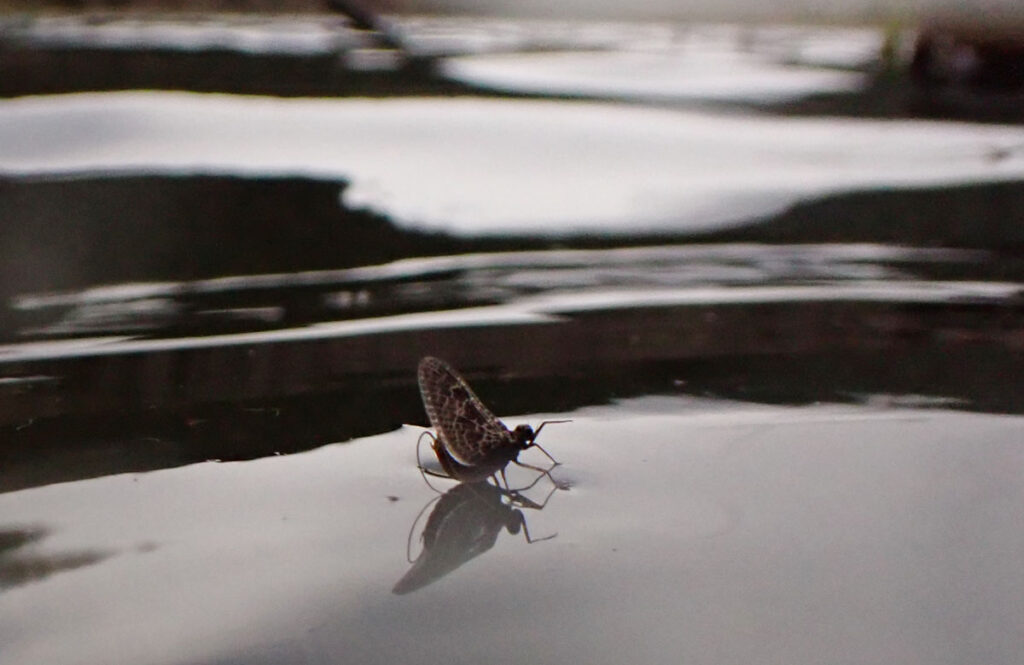
Brook Trout Diet
Brook trout have a diverse diet that changes as they grow. They are trout-like, feeding opportunistically on most organisms that fit into their mouths.
Tiny brook trout fry feed on plankton and minute organic matter. As they grow, they add small aquatic insects and other invertebrates to their diets. This helps them grow quickly.
Mature brook trout in streams and lakes primarily feed on aquatic insects, such as caddisflies, stoneflies, mayflies, and midges, plus terrestrial insects that fall into the water. Small fish, crayfish, other crustaceans, and even amphibians are on the menu, as well. Sea-run brook trout feed on fish, shrimp, and marine worms in the ocean.
Brook Trout Predators
Brook trout face a variety of predators. Juvenile fish are preyed upon by larger fish, such as mature brook trout and lake trout. Birds are another major predator, including herons, ospreys, bald eagles, and kingfishers. Reptiles like northern water snakes and snapping turtles also occasionally feed on brookies. Several types of mammals also eat brook trout. Otters are extremely effective predators, especially in small streams. Mink and raccoons are also predators.
Humans can also be considered predators – fishing for brook trout for sport and consumption.
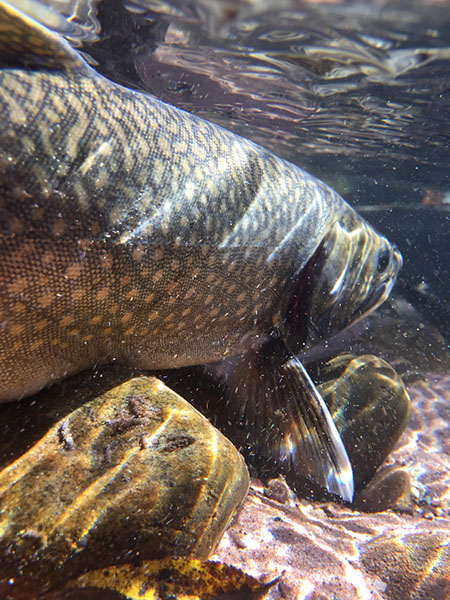
Hybridization
Brook trout hybridization occurs naturally and through human intervention.
Natural Brook Trout Hybrids
Their natural range overlaps with two other species of char: Arctic char and lake trout. They naturally hybridize with Arctic char, although this is uncommon. Hybrids of these two related species are sometimes called sparctic char. Natural hybridization with lake trout is extremely rare. Instead, they’re bred in hatcheries by crossing male brook trout and female lake trout. Called splake, these hybrids are fertile but rarely reproduce successfully in the wild.
Brook trout have also been introduced across much of the western US and Canada in watersheds with bull trout. These two char species readily hybridize, which has led to declines in many bull trout populations.
Hatchery-Derived Brook Trout Hybrids
Brook trout have also been bred with several species outside the Salvelinus genus. These hybrids are the result of hatchery breeding and result in sterile offspring. Tiger trout, a cross between brown trout and brook trout, are the most common example. Tiger trout are highly piscivorous and often used to boost sport fisheries or to control other invasive fish species.
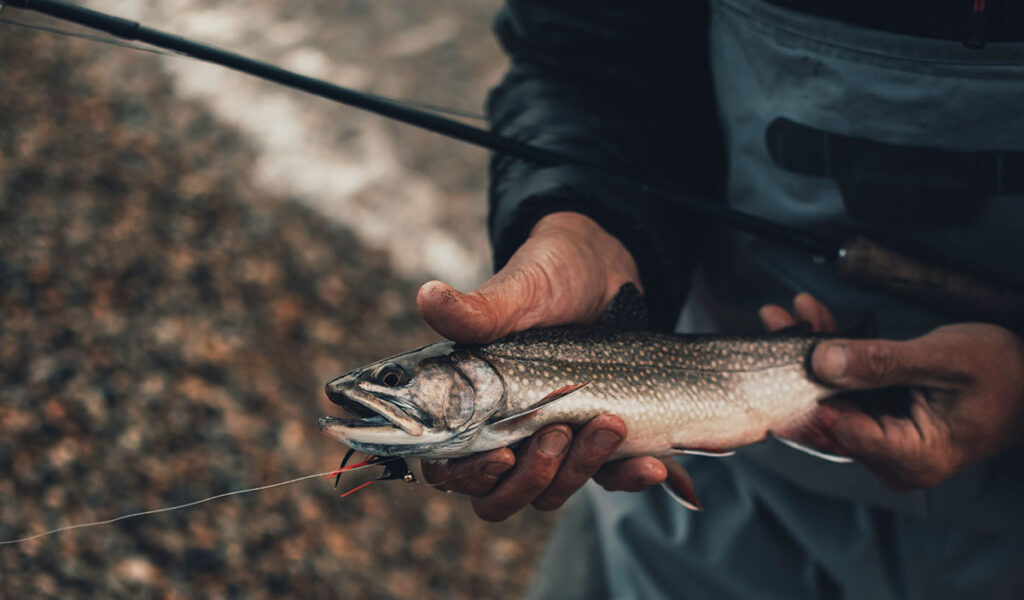
Conservation and Challenges
Brook trout have faced significant declines across their native range due to environmental threats and competition from non-native species.
In the late 19th century, native brook trout populations were extirpated from many watersheds in North America due to land development, forest clear-cutting, and industrialization. Streams affected by pollution, damming, and siltation became too warm to sustain brook trout. This allowed introduced, non-native species such as rainbow and brown trout to replace them. Inversely, introduced brook trout in the West have negatively impacted cutthroat and bull trout populations.
Brook trout are not listed under the Endangered Species Act, but there have been observed declines in some native populations. Great Lakes coasters were proposed as Endangered in 2009, though they were deemed healthy enough to remain unlisted.
Chemical pollution, air pollution, and acid rain have further reduced brook trout habitats, especially in the southern Appalachians and eastern Canada. Conservation efforts have helped to restore brook trout habitats and populations, focusing on protecting and rehabilitating affected water bodies.
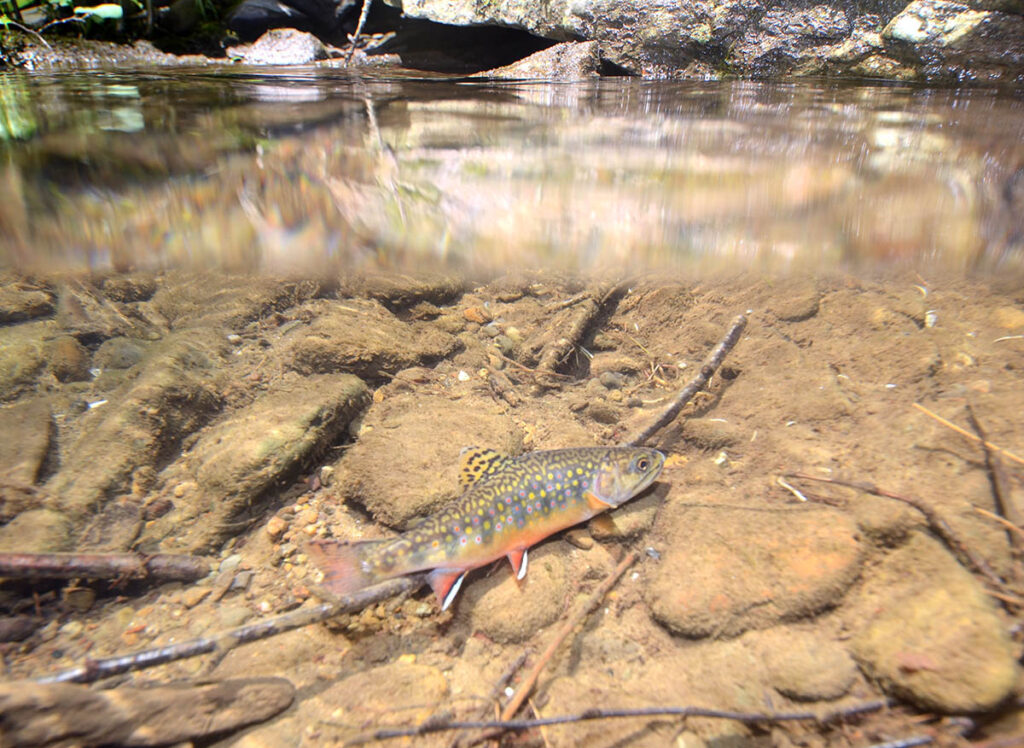
Conclusion
Brook trout are more than just fish; they’re a symbol of pristine freshwater ecosystems and a subject of admiration for biologists and anglers alike. Understanding its biology, habitat, and conservation needs is essential for ensuring that future generations can continue to appreciate this remarkable species.
